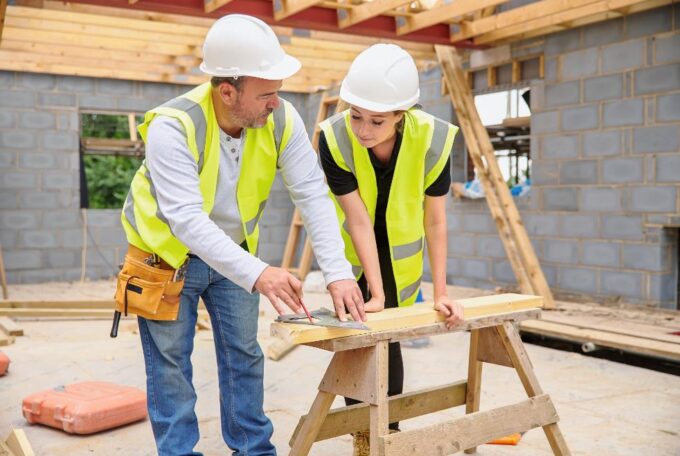Never without helmet!
No ice hockey player or Formula 1 driver would enter the playing field or get into his car without a hard hat. But on construction sites, despite the obligation to wear a helmet, you see workers "topless" time and again. What can safety managers do to promote acceptance of wearing a helmet?

The construction worker's helmet is the classic example of personal protective equipment (PPE) and the importance of wearing it is undisputed. The specifications are clear, because according to Art. 5 BauAV, a hard hat must be worn for all work "where there is a risk from falling objects or materials". This will not change in 2022 as a result of the new BauAV. Enforcing the obligation to wear PPE will remain a permanent task for occupational health and safety officers, and not only on the construction site.
Inform and involve employees
Where employees are required to wear PPE, the reason must be clear. Supervisors should consistently counter the attitude that a helmet must be worn "because of Suva" or a regulatory agency. Even if it seems obvious when it comes to helmets, everyone must be made aware of the risks of serious head injuries - e.g. during crane operation or scaffolding - and why a bump cap is not enough.
Protective clothing is more likely to be accepted if employees are involved in the selection process. Supervisors encourage positive attitudes toward PPE by explicitly praising consistent wearing. In teams, veterans should pay attention to newcomers and apprentices.
Staying consistent, even as a boss
A PPE wearing requirement always applies to everyone, without exception. Even the managing director who gives tours of the company to business associates or politicians must wear a helmet, hairnet or noise protection if this is prescribed on site, as must all his guests. Similarly, the requirement to wear a helmet on a construction site also applies to architects and site managers. Anyone who, as the "boss," allows himself a private exemption here is acting irresponsibly, lacks credibility and undermines the safety commitment of everyone else.
Investigate causes of rejection ...
Anyone who takes off their helmet has a reason for doing so. Is it uncomfortable? Does it get too warm or too cold on the head? Does the helmet pinch or cause itching? Or is there a lack of understanding of the necessity of head protection? Only those who ask these questions can take targeted action against non-wearing. Maybe it's just a question of convenience, because it's tedious to always have to fetch your helmet from the other end of a large construction site. Then this can be organized differently so that helmets are ready where the employees arrive and the workday begins.
... and actively find solutions
It is understandable that the tendency to take off the helmet "just for a moment" increases in the summer heat on the construction site. Instead of tolerating this, supervisors should insist on the wearing of helmets, but at the same time take the sensitivities of their employees seriously. It is always necessary to clarify how strains can be avoided without losing protection, e.g.:
Is the helmet suitable for summer heat? Does it have ventilation slots or individually adjustable ventilation zones that prevent heavy sweating?
Is the helmet properly adjusted and fitted to the employee? When was the welding band last replaced?
Can helmet accessories be used, e.g. a neck protector with active cooling effect through evaporative cooling in summer or a helmet undercoat (thin cap) for protection against the cold in winter?
Independently of this, it should be checked whether the work can be moved to a cooler time of day or carried out under a shady sun awning or similar. Often, creative approaches at different levels (technical + organizational + high-quality PPE) can defuse conflict situations over wearing requirements. And even if a simple solution is not found immediately, employees receive the signal that employers and supervisors are seriously concerned about their well-being. This alone solidifies acceptance to use protective equipment.
This technical article appeared in the printed edition SAFETY-PLUS 4-2021.
You want to read the articles of this issue? Then close right now here a subscription.









